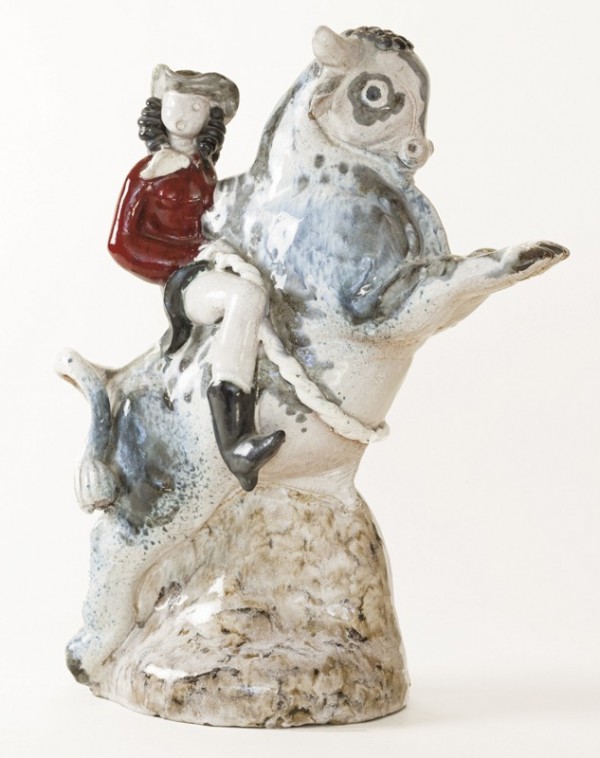
Russell Aitken, Wyoming Europa, 1939. Glazed earthenware. H. 12". (Private collection; photo, Randl Bye.)
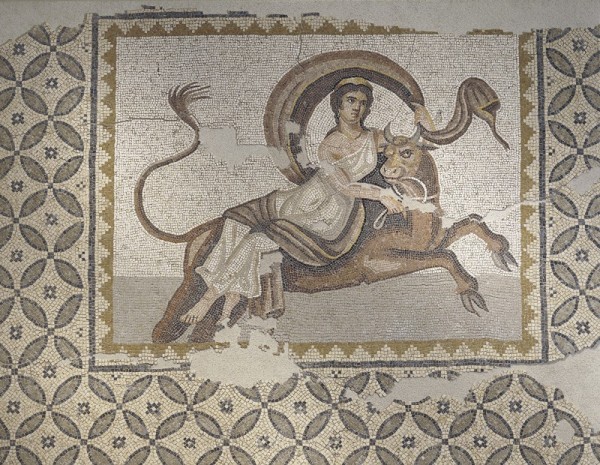
Tile mosaic, Europa Abducted by Zeus Transformed into Bull, Byblos, Lebanon. Roman era, 3rd century A.D. (De Agostini Picture Library, G. Dagli Orti, Bridgeman Images.)
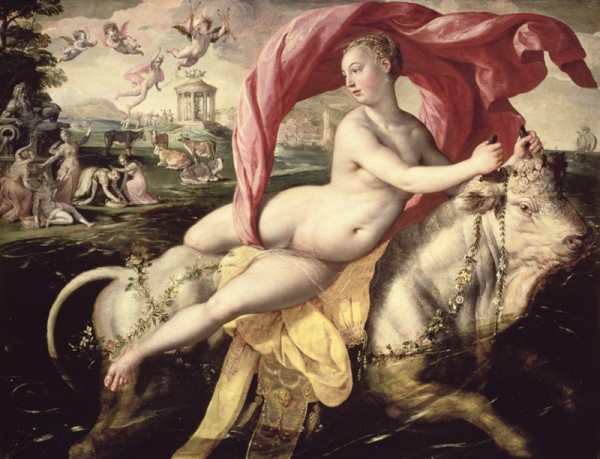
Maerten de Vos (1532–1603), The Rape of Europa, ca. 1590. Oil on oak panel. 52 5/8" x 68 11/16". (Museo de Bellas Artes, Bilbao, Spain, Bridgeman Images.)
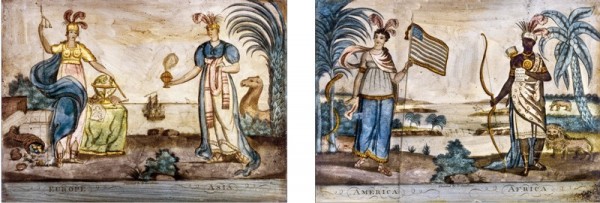
D. Gerolina, (left) Europe and Asia and (right) America and Africa, England, ca. 1807. Reverse painting on glass. 14" x 10". (Private collection.)
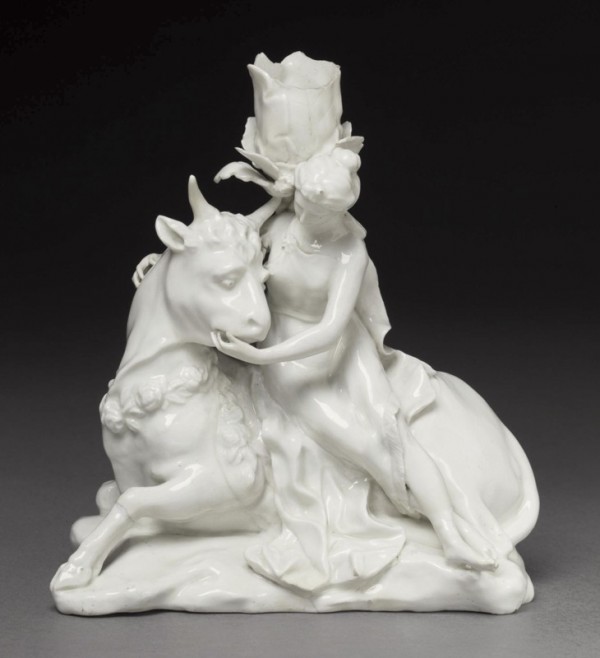
Candlestick depicting Europa and the Bull, Charles Gouyn’s Factory, London, England, 1750–1760. Soft-paste porcelain. H. 7 11/16". (© Victoria and Albert Museum, London.)

Carl Milles, Europa and the Bull, Study for Large Fountain, 1926. Bronze. H. 31". (Cranbrook Foundation, gift of George Gough Booth and Ellen Scripps Booth; archive photo, courtesy Cranbrook Art Museum.)

Paul Manship, Europa and the Bull, 1924. Bronze. H. excluding marble base 9 1/2". (© Christie’s Images Limited 2016.)
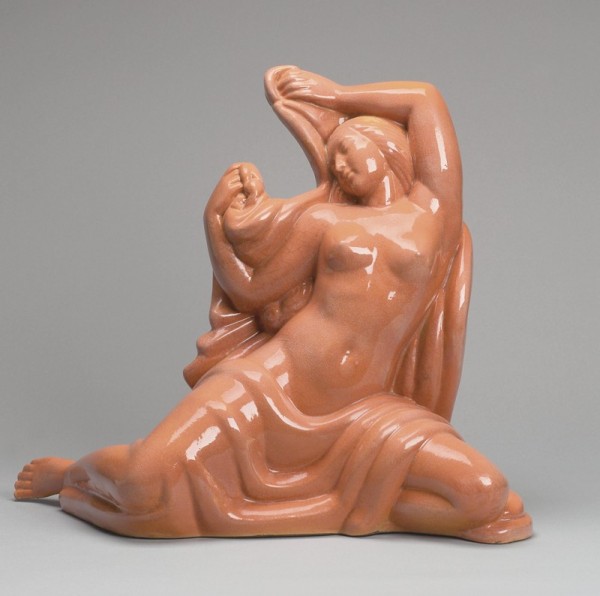
Paul Manship, Europa, for the Cowan Pottery Studio, Rocky River, Ohio, ca. 1928. Earthenware with “terra cotta” glaze. H. 15". (Cowan Pottery Museum, Rocky River Public Library.)

Cranbrook brochure, 1932, showing Waylande Gregory’s Girl with Olive, 1932.
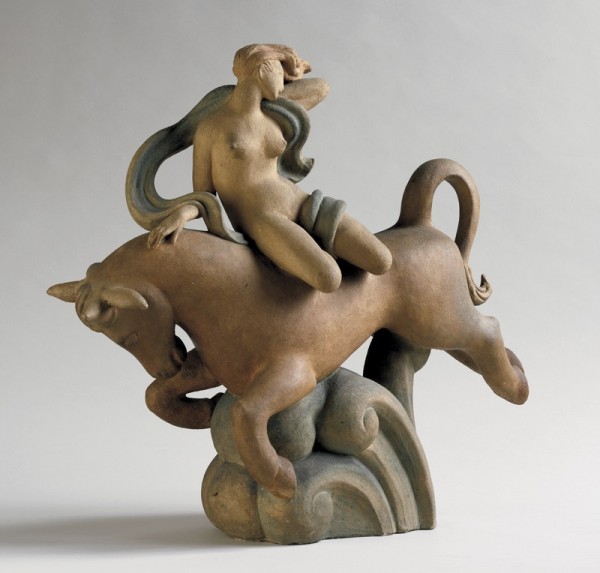
Waylande Gregory, Europa and the Bull, ca. 1934. Earthenware. H. 23". (Everson Museum of Art, museum purchase.)

Valerie (“Vally”) Wieselthier, Europa and the Bull, 1938. Glazed earthenware. H. 25". (Private collection; photo, Randl Bye.)

Viktor Schreckengost, The Abduction, 1938. Glazed earthenware. H. 14". (Viktor Schreckengost Foundation.)

Russell Aitken, Europa, ca. 1935, glazed earthenware. Dimensions unrecorded. (Collection unknown; photo from Time, October 18, 1937.)
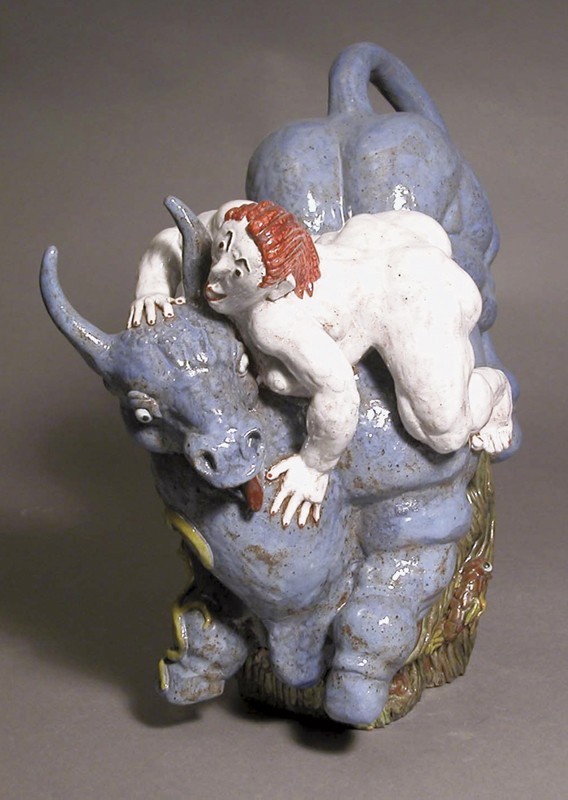
Charles (“Chuck”) Yerkes Dusenbury, Europa and the Bull, 1940. Glazed earthenware. H. 14". (Cranbrook Art Museum, gift of the artist.)
